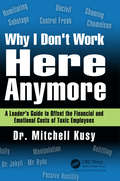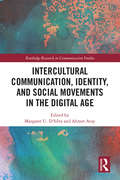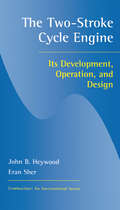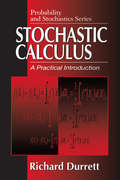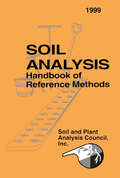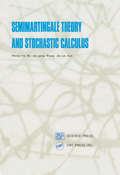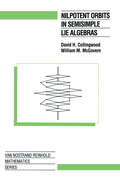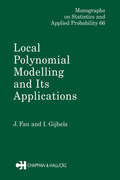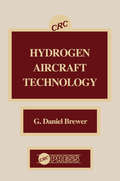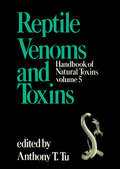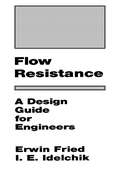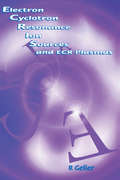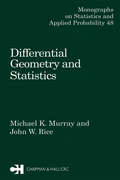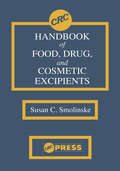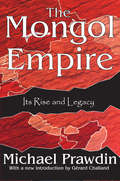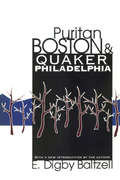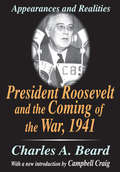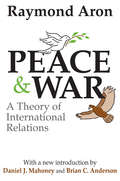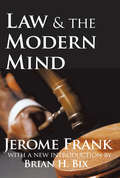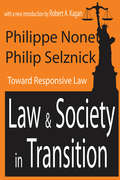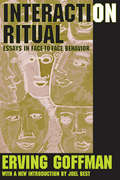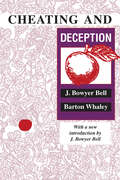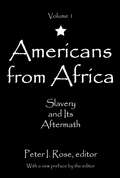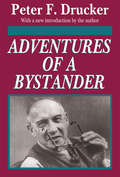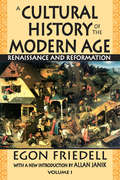- Table View
- List View
Why I Don't Work Here Anymore: A Leader’s Guide to Offset the Financial and Emotional Costs of Toxic Employees
by Mitchell KusyYou have likely heard stories from friends, family members, and colleagues who quit a job because of a toxic person—an individual who belittles, shames, humiliates, shames, or bullies. You may not have realized that these individuals not only take their tolls on our emotional psyches, but the financial outcomes of their organizations as well. Through this book’s many case examples, as well as evidence-based practices and templates, each chapter singles out one main issue and how to resolve it with respect and clarity. Dr. Kusy presents concrete practices that will restore civility and respect into your organization as well as with increased financial performance. Some of these practices include: Calculating the real financial cost of toxic people in your organization. Providing direct and respectful feedback to a toxic peer, direct report, and even your boss. Replacing traditional exit interviews -- that often don’t work very well -- with a method for dealing with toxic chameleons who "knock down and kiss up." Hiring, engaging talent, and even firing people based on a new approach to values-based performance management. You will emerge with a newfound understanding that restores personal well-being and increased financial performance.
Intercultural Communication, Identity, and Social Movements in the Digital Age (Routledge Research in Communication Studies)
by Margaret U. D’Silva; Ahmet AtayThis book examines the complex and multidimensional relationship between culture and social media, and its specific impact on issues of identity and social movements, in a globalized world. Contemporary cyber culture involves communication among people who are culturally, nationally, and linguistically similar or radically different. Social media becomes a space for mediated cultural information transfer which can either facilitate a vibrant public sphere or create cultural and social cleavages. Contributors of the book come from diverse cultural backgrounds to provide a comprehensive analysis of how these social media exchanges allow members of traditionally oppressed groups find their voices, cultivate communities, and construct their cultural identities in multiple ways.This book will be of great relevance to scholars and students working in the field of media and new media studies, intercultural communication, especially critical intercultural communication, and academics studying social identity and social movements.
Two-Stroke Cycle Engine: Its Development, Operation and Design (Combustion)
by JohnB. HeywoodThis book addresses the two-stroke cycle internal combustion engine, used in compact, lightweight form in everything from motorcycles to chainsaws to outboard motors, and in large sizes for marine propulsion and power generation. It first provides an overview of the principles, characteristics, applications, and history of the two-stroke cycle engine, followed by descriptions and evaluations of various types of models that have been developed to predict aspects of two-stroke engine operation.
Stochastic Calculus: A Practical Introduction (Probability and Stochastics Series #6)
by Richard DurrettThis compact yet thorough text zeros in on the parts of the theory that are particularly relevant to applications . It begins with a description of Brownian motion and the associated stochastic calculus, including their relationship to partial differential equations. It solves stochastic differential equations by a variety of methods and studies in detail the one-dimensional case. The book concludes with a treatment of semigroups and generators, applying the theory of Harris chains to diffusions, and presenting a quick course in weak convergence of Markov chains to diffusions. The presentation is unparalleled in its clarity and simplicity. Whether your students are interested in probability, analysis, differential geometry or applications in operations research, physics, finance, or the many other areas to which the subject applies, you'll find that this text brings together the material you need to effectively and efficiently impart the practical background they need.
Soil Analysis Handbook of Reference Methods
by Soil and Soil and Plant Analysis Council Inc.For more than 30 years, soil testing has been widely used as a basis for determining lime and fertilizer needs. Today, a number of procedures are used for determining everything from soil pH and lime requirement, to the level of extractable nutrient elements. And as the number of cropped fields being tested increases, more and more farmers and growers will come to rely on soil test results. But if soil testing is to be an effective means of evaluating the fertility status of soils, standardization of methodology is essential. No single test is appropriate for all soils.Soil Analysis Handbook of Reference Methods is a standard laboratory technique manual for the most commonly used soil analysis procedures. First published in 1974, this Handbook has changed over the years to reflect evolving needs. New test methods and modifications have been added, as well as new sections on nitrate, heavy metals, and quality assurance plans for agricultural testing laboratories. Compiled by the Soil and Plant Analysis Council, this latest edition of Soil Analysis Handbook of Reference Methods also addresses the major methods for managing plant nutrition currently in use in the United States and other parts of the world. For soil scientists, farmers, growers, or anyone with an interest in the environment, this reference will prove an invaluable guide to standard methods for soil testing well into the future.Features
Semimartingale Theory and Stochastic Calculus
by Sheng-Wu He Jia-Gang Wang Jia-an YanSemimartingale Theory and Stochastic Calculus presents a systematic and detailed account of the general theory of stochastic processes, the semimartingale theory, and related stochastic calculus. The book emphasizes stochastic integration for semimartingales, characteristics of semimartingales, predictable representation properties and weak convergence of semimartingales. It also includes a concise treatment of absolute continuity and singularity, contiguity, and entire separation of measures by semimartingale approach. Two basic types of processes frequently encountered in applied probability and statistics are highlighted: processes with independent increments and marked point processes encountered frequently in applied probability and statistics. Semimartingale Theory and Stochastic Calculus is a self-contained and comprehensive book that will be valuable for research mathematicians, statisticians, engineers, and students.
Nilpotent Orbits In Semisimple Lie Algebra: An Introduction
by William.M. McGovernThrough the 1990s, a circle of ideas emerged relating three very different kinds of objects associated to a complex semisimple Lie algebra: nilpotent orbits, representations of a Weyl group, and primitive ideals in an enveloping algebra. The principal aim of this book is to collect together the important results concerning the classification and properties of nilpotent orbits, beginning from the common ground of basic structure theory. The techniques used are elementary and in the toolkit of any graduate student interested in the harmonic analysis of representation theory of Lie groups. The book develops the Dynkin-Konstant and Bala-Carter classifications of complex nilpotent orbits, derives the Lusztig-Spaltenstein theory of induction of nilpotent orbits, discusses basic topological questions, and classifies real nilpotent orbits. The classical algebras are emphasized throughout; here the theory can be simplified by using the combinatorics of partitions and tableaux. The authors conclude with a survey of advanced topics related to the above circle of ideas. This book is the product of a two-quarter course taught at the University of Washington.
Local Polynomial Modelling and Its Applications: Monographs on Statistics and Applied Probability 66 (ISSN)
by Jianqing FanData-analytic approaches to regression problems, arising from many scientific disciplines are described in this book. The aim of these nonparametric methods is to relax assumptions on the form of a regression function and to let data search for a suitable function that describes the data well. The use of these nonparametric functions with parametric techniques can yield very powerful data analysis tools. Local polynomial modeling and its applications provides an up-to-date picture on state-of-the-art nonparametric regression techniques. The emphasis of the book is on methodologies rather than on theory, with a particular focus on applications of nonparametric techniques to various statistical problems. High-dimensional data-analytic tools are presented, and the book includes a variety of examples. This will be a valuable reference for research and applied statisticians, and will serve as a textbook for graduate students and others interested in nonparametric regression.
Hydrogen Aircraft Technology
by G.Daniel BrewerLiquid hydrogen is shown to be the ideal fuel for civil transport aircraft, as well as for many types of military aircraft. Hydrogen Aircraft Technology discusses the potential of hydrogen for subsonic, supersonic, and hypersonic applications. Designs with sample configurations of aircraft for all three speed categories are presented, in addition to performance comparisons to equivalent designs for aircraft using conventional kerosine-type fuel and configurations for aircraft using liquid methane fuel. Other topics discussed include conceptual designs of the principal elements of fuel containment systems required for cryogenic fuels, operational elements (e.g., pumps, valves, pressure regulators, heat exchangers, lines and fittings), modifications for turbine engines to maximize the benefit of hydrogen, safety aspects compared to kerosine and methane fueled designs, equipment and facility designs for servicing hydrogen-fueled aircraft, production methods for liquid hydrogen, and the environmental advantages for using liquid hydrogen. The book also presents a plan for conducting the necessary development of technology and introducing hydrogen fuel into the worldwide civil air transport industry. Hydrogen Aircraft Technology will provide fascinating reading for anyone interested in aircraft and hydrogen fuel designs.
Handbook of Natural Toxins: Reptile Venoms and Toxins (Handbook Of Natural Toxins Ser.)
by Anthony T. TuIn 24 contributed chapters, 37 international specialists describe the latest developments in research on snake venom including different types of venoms and toxins, actions, antidotes, and applications and summarize what is known to date on Gila monster and frog toxins. Some 70 tables provide essent
Flow Resistance: Design Guide For Engineers
by I.E. IdelchikA sourcebook offering an up-to-date perspective on a variety of topics and using practical, applications-oriented data necessary for the design and evaluation of internal fluid system pressure losses. It has been prepared for the practicing engineer who understands fluid-flow fundamentals.
Electron Cyclotron Resonance Ion Sources and ECR Plasmas
by R GellerAcknowledged as the "founding father" of and world renowned expert on electron cyclotron resonance sources Richard Geller has produced a unique book devoted to the physics and technicalities of electron cyclotron resonance sources. Electron Cyclotron Resonance Ion Sources and ECR Plasmas provides a primer on electron cyclotron phenomena in ion sour
Differential Geometry and Statistics (ISSN)
by M.K. MurraySeveral years ago our statistical friends and relations introduced us to the work of Amari and Barndorff-Nielsen on applications of differential geometry to statistics. This book has arisen because we believe that there is a deep relationship between statistics and differential geometry and moreoever that this relationship uses parts of differential geometry, particularly its 'higher-order' aspects not readily accessible to a statistical audience from the existing literature. It is, in part, a long reply to the frequent requests we have had for references on differential geometry! While we have not gone beyond the path-breaking work of Amari and Barndorff- Nielsen in the realm of applications, our book gives some new explanations of their ideas from a first principles point of view as far as geometry is concerned. In particular it seeks to explain why geometry should enter into parametric statistics, and how the theory of asymptotic expansions involves a form of higher-order differential geometry. The first chapter of the book explores exponential families as flat geometries. Indeed the whole notion of using log-likelihoods amounts to exploiting a particular form of flat space known as an affine geometry, in which straight lines and planes make sense, but lengths and angles are absent. We use these geometric ideas to introduce the notion of the second fundamental form of a family whose vanishing characterises precisely the exponential families.
CRC Handbook of Food, Drug, and Cosmetic Excipients
by Susan C. SmolinskeCRC Handbook of Food, Drug, and Cosmetic Excipients provides a comprehensive summary of toxicological issues regarding inactive ingredients in pharmaceutical products, cosmetic products, and food additives. Background information on regulations and labeling requirements for each type of product is provided, and 77 articles critically review human and animal data pertinent to a variety of agents and makes judgments regarding the clinical relevance. The book also identifies at-risk populations, such as neonates, patients with renal failure, and atopic patients. Inactive common pharmaceutical agents and/or foods containing certain ingredients are listed to help physicians counsel hypersensitive patients who must avoid products containing these excipients.
The Mongol Empire: Its Rise and Legacy
by Michael PrawdinIn his prologue to The Mongol Empire, Michael Prawdin sets the stage for the last and mightiest onslaught of the nomads upon the civilized world. He tells of the many rejoicings in Europe over the successes of the Crusaders in A.D. 1221. But little did Europe know that two decades later, the Mongol hordes organized by Genghis Khan would turn the Middle East into a heap of ruins and spread terror throughout the West. A work of enduring scholarship and literary excellence, The Mongol Empire is a classic on the rise and fall of the world's largest empire. It describes the incredible ascent of the Mongol people, which, through the political and military genius of Genghis Khan, overwhelmed and subdued the nations of most of the world. It demonstrates the transformation of barbarous nomads into the most efficient rulers of their time and describes the crumbling of their vast empire and the assumption of its legacy by the formerly subjugated China and Russia. Maurice Collis in Time and Tide said of The Mongol Empire: "It has the rare merit of being both scholarly and exciting...The entire world comes on to his canvas, romantic and fantastical persons pass in our view, and at the conclusion we realize that we have seen the whole of what Marco Polo saw only in part. " while The Observer commented, "it is a fine book, full of dramatic occasion well used, clear in proportions."
Puritan Boston and Quaker Philadelphia
by E. Digby BaltzellBased on the biographies of some three hundred people in each city, this book shows how such distinguished Boston families as the Adamses, Cabots, Lowells, and Peabodys have produced many generations of men and women who have made major contributions to the intellectual, educational, and political life of their state and nation. At the same time, comparable Philadelphia families such as the Biddles, Cadwaladers, Ingersolls, and Drexels have contributed far fewer leaders to their state and nation. From the days of Benjamin Franklin and Stephen Girard down to the present, what leadership there has been in Philadelphia has largely been provided by self-made men, often, like Franklin, born outside Pennsylvania.Baltzell traces the differences in class authority and leadership in these two cites to the contrasting values of the Puritan founders of the Bay Colony and the Quaker founders of the City of Brotherly Love. While Puritans placed great value on the calling or devotion to one's chosen vocation, Quakers have always placed more emphasis on being a good person than on being a good judge or statesman. Puritan Boston and Quaker Philadelphia presents a provocative view of two contrasting upper classes and also reflects the author's larger concern with the conflicting values of hierarchy and egalitarianism in American history.
President Roosevelt and the Coming of the War, 1941: Appearances and Realities
by Charles BeardConceived by Charles Beard as a sequel to his provocative study of American Foreign Policy in the Making, 1932-1940, President Roosevelt and the Coming of the War outraged a nation, permanently damaging Beard's status as America's most influential historian.Beard's main argument is that both Democratic and Republican leaders, but Roosevelt above all, worked quietly in 1940 and 1941 to insinuate the United States into the Second World War. Basing his work on available congressional records and administrative reports, Beard concludes that FDR's image as a neutral, peace-loving leader was a smokescreen, behind which he planned for war against Germany and Japan even well before the attack on Pearl Harbor.Beard contends that the distinction between aiding allies in Europe like Great Britain and maintaining strict neutrality with respect to nations like Germany and Japan was untenable. Beard does not argue that all nations were alike, or that some did and others did not merit American support, but rather that Roosevelt chose to aid Great Britain secretly and unconstitutionally rather than making the case to the American public. President Roosevelt shifted from a policy of neutrality to one of armed intervention, but he did so without surrendering the appearance, the fiction of neutrality. This core argument makes the work no less explosive in 2003 than it was when first issued in 1948.
Peace and War: A Theory of International Relations
by Raymond AronPeace and War by Raymond Aron is one of the greatest books ever written on international relations. Aron's starting point is the state of nature that exists between nations, a condition that differs essentially from the civil state that holds within political communities. Ever keeping this brute fact about the life of nations in mind and ranging widely over political history and many disciplines, Aron develops the essential analytical tools to enable us to think clearly about the stakes and possibilities of international relations.In his first section, "Theory," Aron shows that, while international relations can be mapped, and probabilities discerned, no closed, global "science" of international relations is anything more than a mirage. In the second part, "Sociology," Aron studies the many ways various subpolitical forces influence foreign policy. He emphasizes that no rigorous determinism is at work: politics—and thus the need for prudent statesmanship—are inescapable in international relations. In part three, "History," Aron offers a magisterial survey of the twentieth century. He looks at key developments that have had an impact on foreign policy and the emergence of what he calls "universal history," which brings far-flung peoples into regular contact for the first time. In a final section, "Praxeology," Aron articulates a normative theory of international relations that rejects both the bleak vision of the Machiavellians, who hold that any means are legitimate, and the naivete of the idealists, who think foreign policy can be overcome.This new edition of Peace and War includes an informative introduction by Daniel J. Mahoney and Brian C. Anderson, situating Aron's thought in a new post-Cold War context, and evaluating his contribution to the study of politics and international relations.
Law and the Modern Mind
by Jerome Frank Brian H. BixLaw and the Modern Mind first appeared in 1930 when, in the words of Judge Charles E. Clark, it "fell like a bomb on the legal world." In the generations since, its influence has grown-today it is accepted as a classic of general jurisprudence.The work is a bold and persuasive attack on the delusion that the law is a bastion of predictable and logical action. Jerome Frank's controversial thesis is that the decisions made by judge and jury are determined to an enormous extent by powerful, concealed, and highly idiosyncratic psychological prejudices that these decision-makers bring to the courtroom.
Law and Society in Transition: Toward Responsive Law
by Philippe Nonet Philip Selznick Robert A. KaganYear by year, law seems to penetrate ever larger realms of social, political, and economic life, generating both praise and blame. Nonet and Selznick's Law and Society in Transition explains in accessible language the primary forms of law as a social, political, and normative phenomenon. They illustrate with great clarity the fundamental difference between repressive law, riddled with raw conflict and the accommodation of special interests, and responsive law, the reasoned effort to realize an ideal of polity. To make jurisprudence relevant, legal, political, and social theory must be reintegrated. As a step in this direction, Nonet and Selznick attempt to recast jurisprudential issues in a social science perspective. They construct a valuable framework for analyzing and assessing the worth of alternative modes of legal ordering. The volume's most enduring contribution is the authors' typology-repressive, autonomous, and responsive law. This typology of law is original and especially useful because it incorporates both political and jurisprudential aspects of law and speaks directly to contemporary struggles over the proper place of law in democratic governance. In his new introduction, Robert A. Kagan recasts this classic text for the contemporary world. He sees a world of responsive law in which legal institutions-courts, regulatory agencies, alternative dispute resolution bodies, police departments-are periodically studied and redesigned to improve their ability to fulfill public expectations. Schools, business corporations, and governmental bureaucracies are more fully pervaded by legal values. Law and Society in Transition describes ways in which law changes and develops. It is an inspiring vision of a politically responsive form of governance, of special interest to those in sociology, law, philosophy, and politics.
Interaction Ritual: Essays in Face-to-Face Behavior
by Erving Goffman"Not then, men and their moments. Rather, moment and their men," writes Erving Goffman in the introduction to his groundbreaking 1967 Interaction Ritual, a study of face-to-face interaction in natural settings, that class of events which occurs during co-presence and by virtue of co-presence. The ultimate behavioral materials are the glances, gestures, positionings, and verbal statements that people continuously feed into situations, whether intended or not.A sociology of occasions is here advocated. Social organization is the central theme, but what is organized is the co-mingling of persons and the temporary interactional enterprises that can arise therefrom. A normatively stabilized structure is at issue, a "social gathering," but this is a shifting entity, necessarily evanescent, created by arrivals and killed by departures. The major section of the book is the essay "Where the Action Is," drawing on Goffman's last major ethnographic project observation of Nevada casinos.Tom Burns says of Goffman's work "The eleven books form a singularly compact body of writing. All his published work was devoted to topics and themes which were closely connected, and the methodology, angles of approach and of course style of writing remained characteristically his own throughout. Interaction Ritual in particular is an interesting account of daily social interaction viewed with a new perspective for the logic of our behavior in such ordinary circumstances as entering a crowded elevator or bus." In his new introduction, Joel Best considers Goffman's work in toto and places Interaction Ritual in that total context as one of Goffman's pivotal works: "His subject matter was unique. In sharp contrast to the natural tendency of many scholars to tackle big, important topics, Goffman was a minimalist, working on a small scale, and concentrating on the most mundane, ordinary social contacts, on everyday life.'"
Cheating and Deception
by J. Bowyer Bell Barton WhaleyCheating and deception are terms often used but rarely defined. They summon up unpleasant connotations; even those deeply involved with cheating and deception rationalize why they have been driven to it. Particularly for Americans and much of Western civilization, official cheating, government duplicity, cheating as policy, and conscious, contrived deception, are all unacceptable except as a last resort in response to threat of extinction. As a distasteful tool, deception is rarely used to achieve national interests, unless in relation to the deployment of military force. As an area of study, it has by and large been ignored.Intrigued by attitudes toward cheating and deception, the authors decided to analyze its roots, structure, and process. They asked fundamental questions: are there categories of deception, general steps in the process of deception, and ways to evaluate its results across time and in different modes? The book that results is a typology of kinds of deception, beginning with military deception, but extending into other categories and stages.In his introduction to this new edition, Bell outlines how the book came to be written, describes the mixed emotions toward the subject displayed by govenmental and nongovernmental funding sources, and speculates about its critical and commercial reception. He discusses widespread new interest in the subject, the research that has been undertaken since this book was first published, and its limitations.This book provides a general overview of this complex subject, creating a framework for analysis of specific instances of cheating or deception. It will be of particular interest to political scientists, those interested in military affairs and strategy, and psychologists. The general reader will find the book written with a light touch, drawing examples of cheating and deception in the pursuit of love and money. The specialist reader will be intrigued by its broad-ranging examples drawn from policy and politics,
Americans from Africa: Slavery and its Aftermath
by Peter I. RoseAmericans from Africa seeks to convey varying perspectives on the "Black Experience" in the United States and its controversial history. This volume, Slavery and Its Aftermath, deals with four major issues: the extent of African influences on the lives of those enslaved and brought to America, beginning with an essay on "Africanisms in Everyday Life" by Melville J. Herskovits; the impact of slavery on personality and social structure, sometimes called "The Elkins Debate;" similarities and differences in life for African Americans in the South and in the North; and matters of community, class, and family, including the full text of the "Moynihan Report" and several pointed critiques.In addition to the commentaries by and on the works of Herskovits, Elkins, and Daniel Patrick Moynihan, other contributors to Volume I include Kenneth B. Clark, Mina Caulfield Davis, E. Franklin Edwards, Eugene Genovese, Ulf Hannerz, Charles S. Johnson, Leroi Jones, and Charles Keil.The second volume, Old Memories, New Moods, contains essays on the roots of black protest; the background and character of the Civil Rights Movement; interpretations of the impact and significance of Black Power, and varied views on changing self-images of being African American.
Adventures of a Bystander
by Peter DruckerPeter Drucker's lively and thoughtful memoirs are now available in paperback with a new introduction by the author. He writes with wit and spirit about people he has encountered in a long and varied life, including Sigmund Freud, Henry Luce, Alfred Sloan, John L. Lewis, and Marshall McLuhan. After beginning with his childhood in Vienna during and after World War I, Drucker moves on to Europe in the 1920s and early 1930s, describing the imminent doom posed by Hitler and the Nazis. He then goes on to describe London during the 1930s, America during the New Deal era, the World War II years, and beyond.According to John Brooks of The New York Times Book Review, "Peter Drucker is at a corner cafe, delightfully regaling anyone who will listen with tales of what must be one of the more varied—and for a practitioner of such a narrow skill as that of management counseling, astonishing—of contemporary professional lives." Dorothy Rabinowitz of the Washington Post writes, "The famous are here as well as the infamous.... All are the beneficiaries, for better or for worse, of Drucker's unerring eye for psychological detail, his remorseless curiosity, and his imaginative sympathy.... Drucker's book appears in a stroke to have restored the art of the memoir and of the essay."Adventures of a Bystander reflects Drucker's vitality, infinite curiosity, and interest in people, ideas, and the forces behind them. His book is a personal and informal account of the rich life of an independent man of letters, a life that spans eight decades and two continents. It will be of interest to scholars and professionals in the business world, historians, sociologists, and admirers of Peter Drucker.
A Cultural History of the Modern Age: Volume 1, Renaissance and Reformation
by Egon FriedellHistorian, philosopher, critic, playwright, journalist, and actor, Egon Friedell was a key figure in the extraordinary flowering of Viennese culture between the two world wars. His masterpiece, A Cultural History of the Modern Age, demonstrates the intellectual universality that Friedell saw as guarantor of the continuity and regeneration of European civilization. Following a brilliant opening essay on cultural history and why it should be studied, the first volume begins with an analysis of the transformation of the Medieval mind as it evolved from the Black Death to the Thirty Years War. The emphasis is on the spiritual and cultural vortex of civilization, but Friedell never forgets the European roots in pestilence, death, and superstition that animate a contrary drive toward reason, refinement, intellectual curiosity, and scientific knowledge. While these values reached their apogee during the Renaissance, Friedell shows that each cultural victory is precarious, and Europe was always in danger of slipping back into barbarism. Friedell's historical vision embraces the whole of Western culture and its development. It is a consistent probing for the divine in the world's course and is, therefore, theology; it is research into the basic forces of the human soul and is, therefore, psychology; it is the most illuminating presentation of the forms of state and society and, therefore, is politics; the most varied collection of all art-creations and is, therefore, aesthetics. Thomas Mann regarded Friedell as one of the great stylists in the German language. Like the works of the great novelist, A Cultural History of the Modern Age offers a dramatic history of the last six centuries, showing the driving forces of each age. The new introduction provides a fascinating biographical sketch of Friedell and his cultural milieu and analyzes his place in intellectual history.
